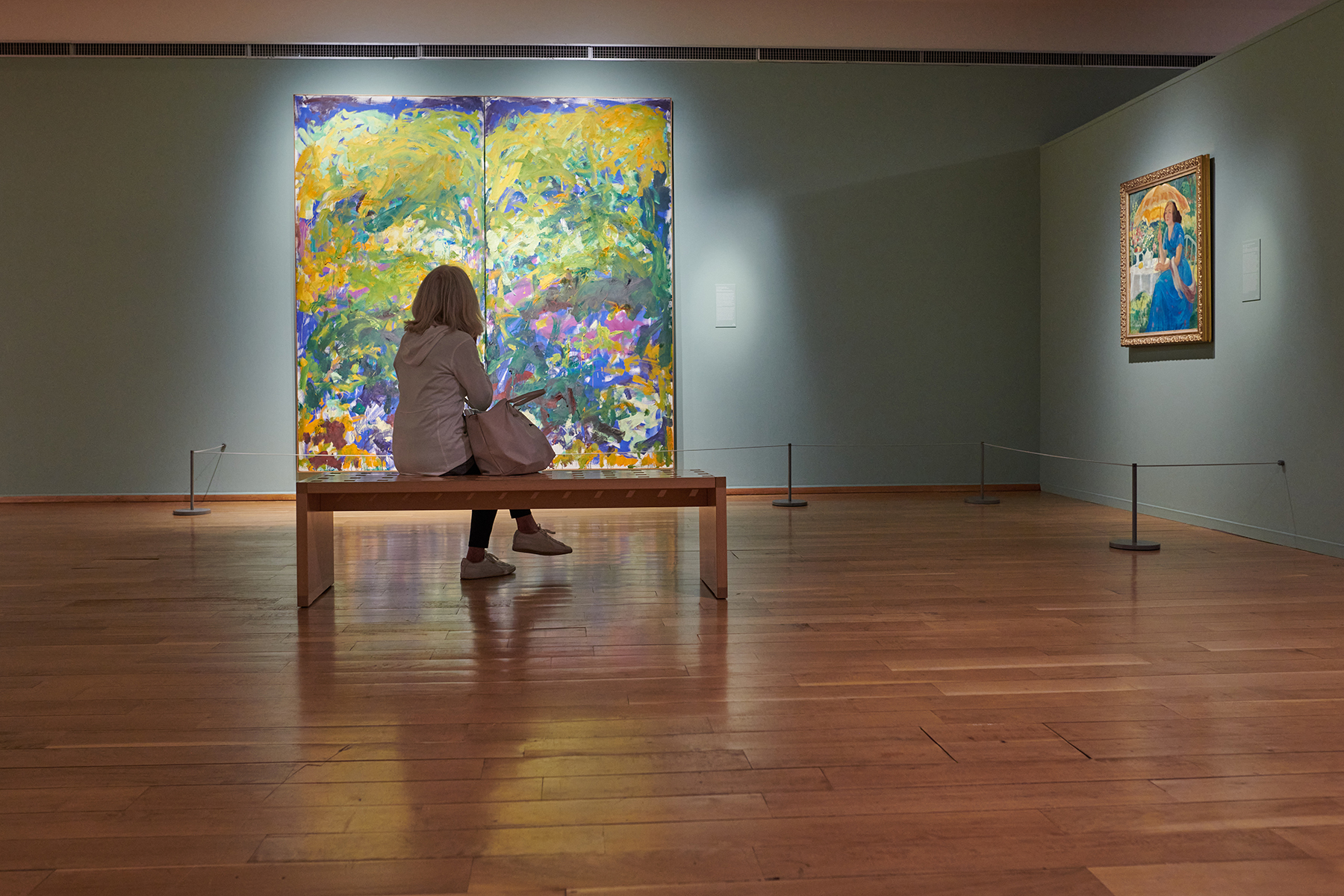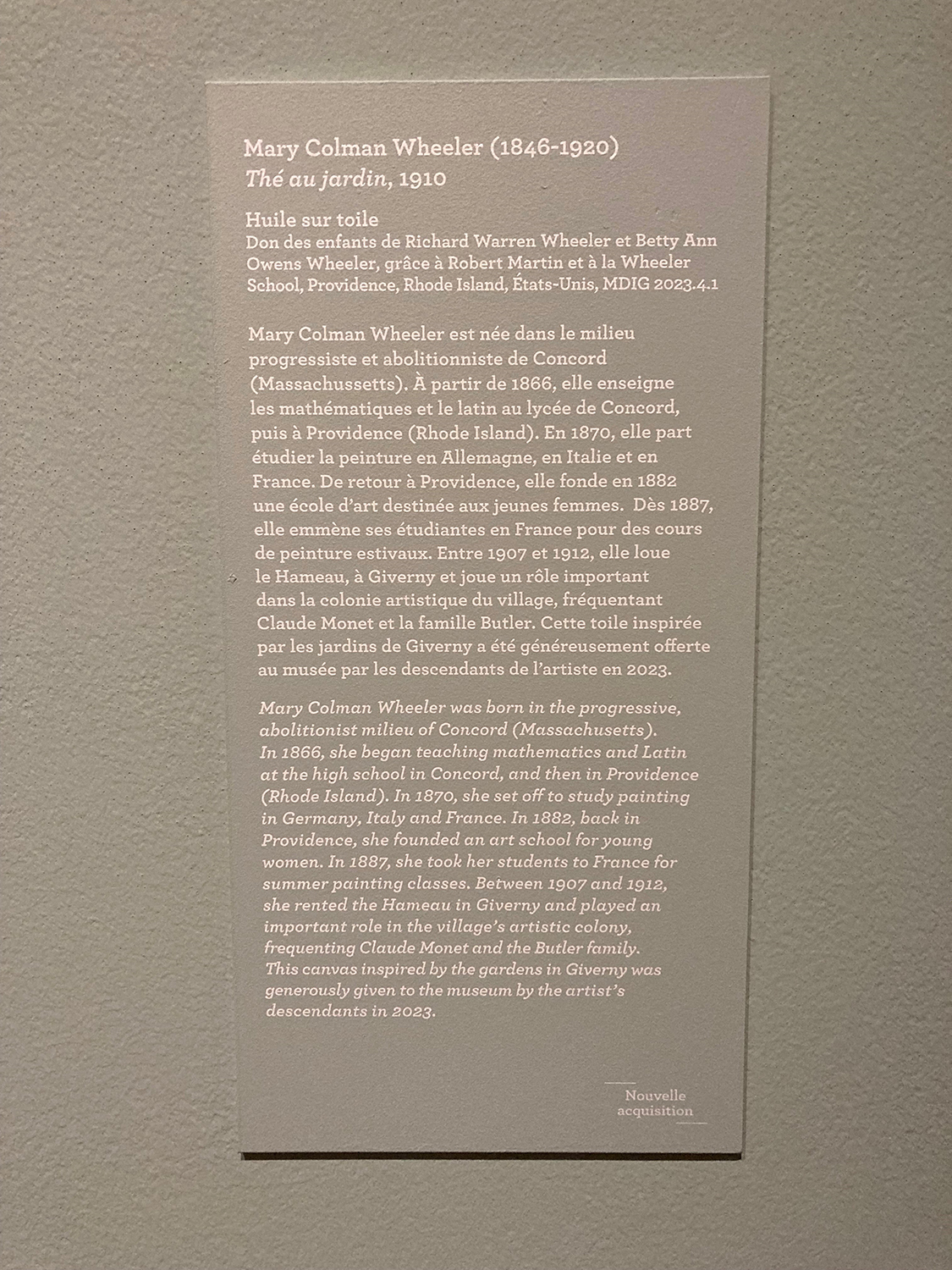
Mary C. Wheeler’s “Tea in a Garden” Travels Back to France
August 18, 2023
By Visual Arts Department Head and School Archivist Bob Martin P’05, P’10
For the past 27 years, a Mary C. Wheeler painting, “Tea in a Garden,” graced the walls of the Cummings Room area on the first floor of the Hope Building, where it was admired by students, faculty, staff, families, and visitors to Wheeler’s Providence campus. But in March, after nearly three decades on display at school, it was carefully packed up and delivered to New York City, where it joined several other works of art for delivery to the Museum of Impressionism in Giverny, France.
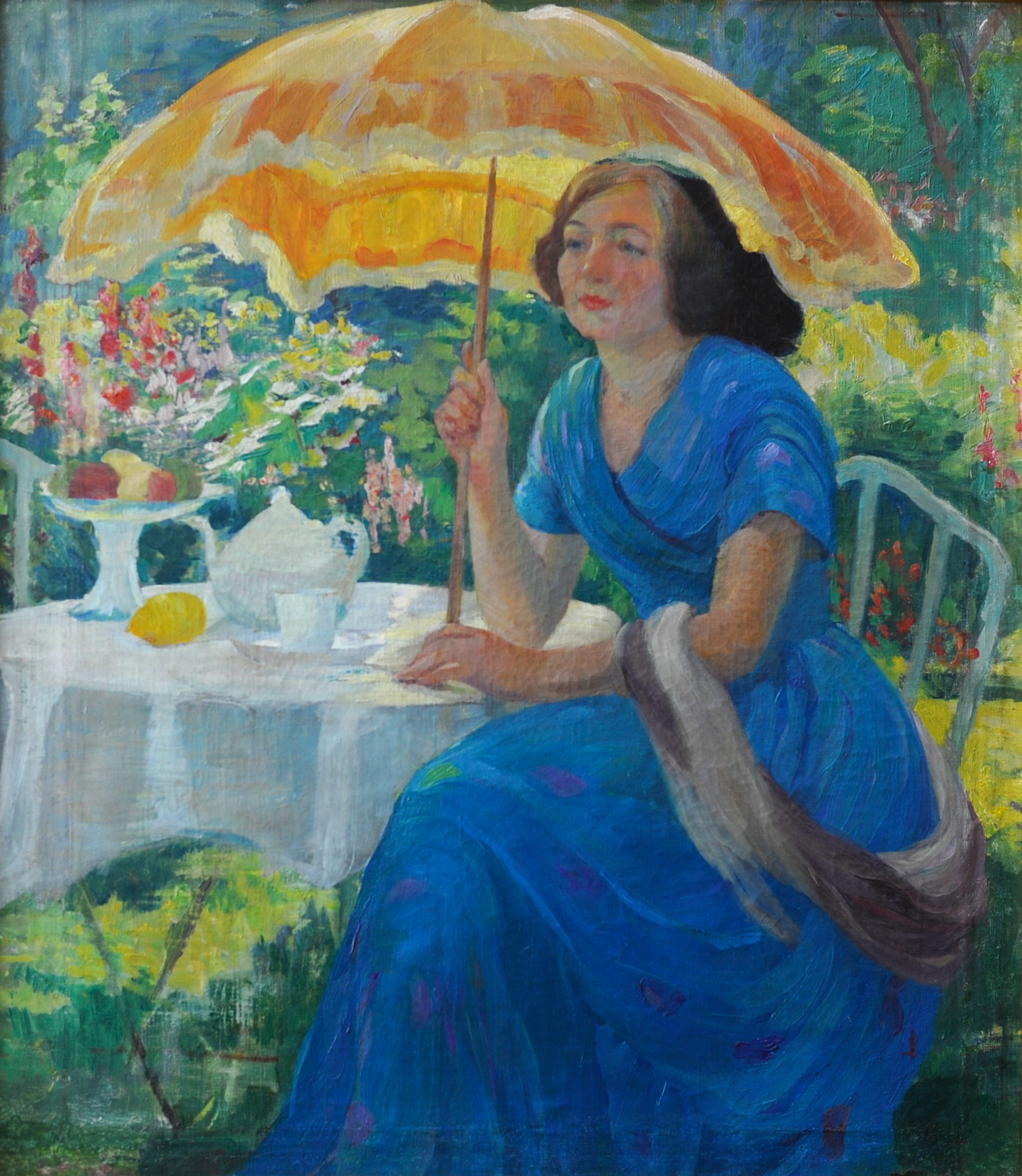
Why Giverny? The painting was created by Mary Wheeler in 1910, during one of her six summers spent in the French village, where she leased a house and gardens next door to the renowned painter Claude Monet. The date was verified through the letters of the late Mildred Burrage (Class of 1910), who traveled to Europe with Mary Wheeler between 1909 and 1912. In her letters from the summer of 1910, Margaret told her family that Miss Wheeler was studying with Karl Albert Buehr (1866-1952), an American Impressionist living and working in Giverny at the time. As it turns out, one of Buehr’s paintings from that particular period shows the same model in the same setting as Wheeler’s “Tea in a Garden.” This fact came to light through Laura Hawkins P’05, a longtime assistant in the Upper School library who spotted the Buehr painting, titled “Expectancy,” in a 1997 art magazine. Buehr’s view of the seated young lady with the parasol places his canvas and easel to the right of Miss Wheeler’s vantage point.
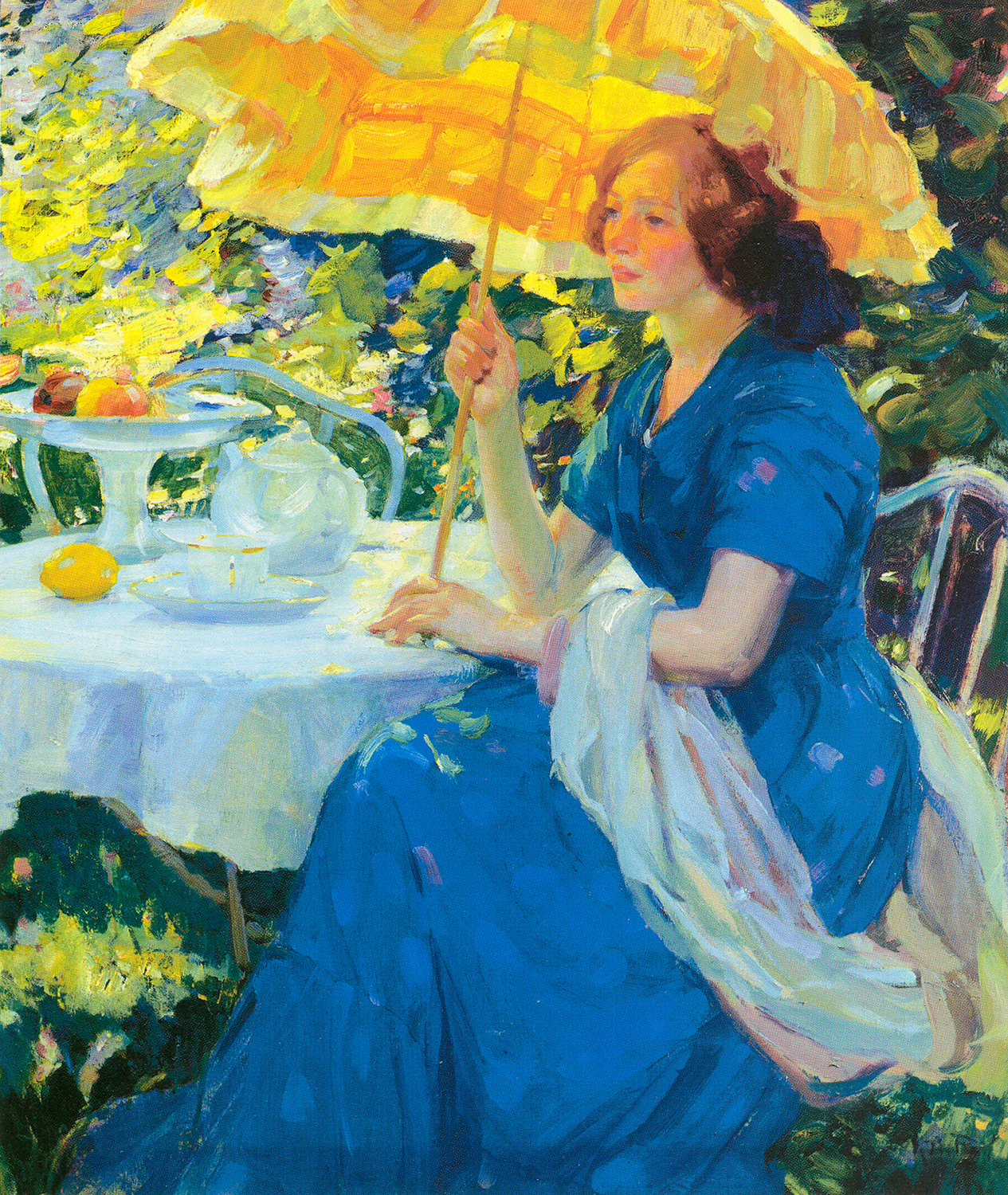
The two artworks represent the classic mode of plein-air painting (working outside the studio, surrounded by nature) made famous by the Impressionists. Inspired initially by the presence of Monet, many artists came to Giverny to paint landscapes, but during the first decade of the 20th century, artists like Karl Buehr, Frederick Frieseke, Richard Miller, and Mary Wheeler turned their attention to painting the human figure posed in outdoor garden settings. This genre was first explored in Giverny through the work of another American Impressionist artist, Lilla Cabot Perry.
“Tea in a Garden” first came to our Providence campus in 1996 through an extended loan from Richard Wheeler, a relative of Mary Wheeler, and his spouse, Betty Ann. At the same time, the Wheelers made the first of several donations of drawings and paintings to the school, and their generosity more than doubled the number of Mary Wheeler’s artworks owned by the school then.
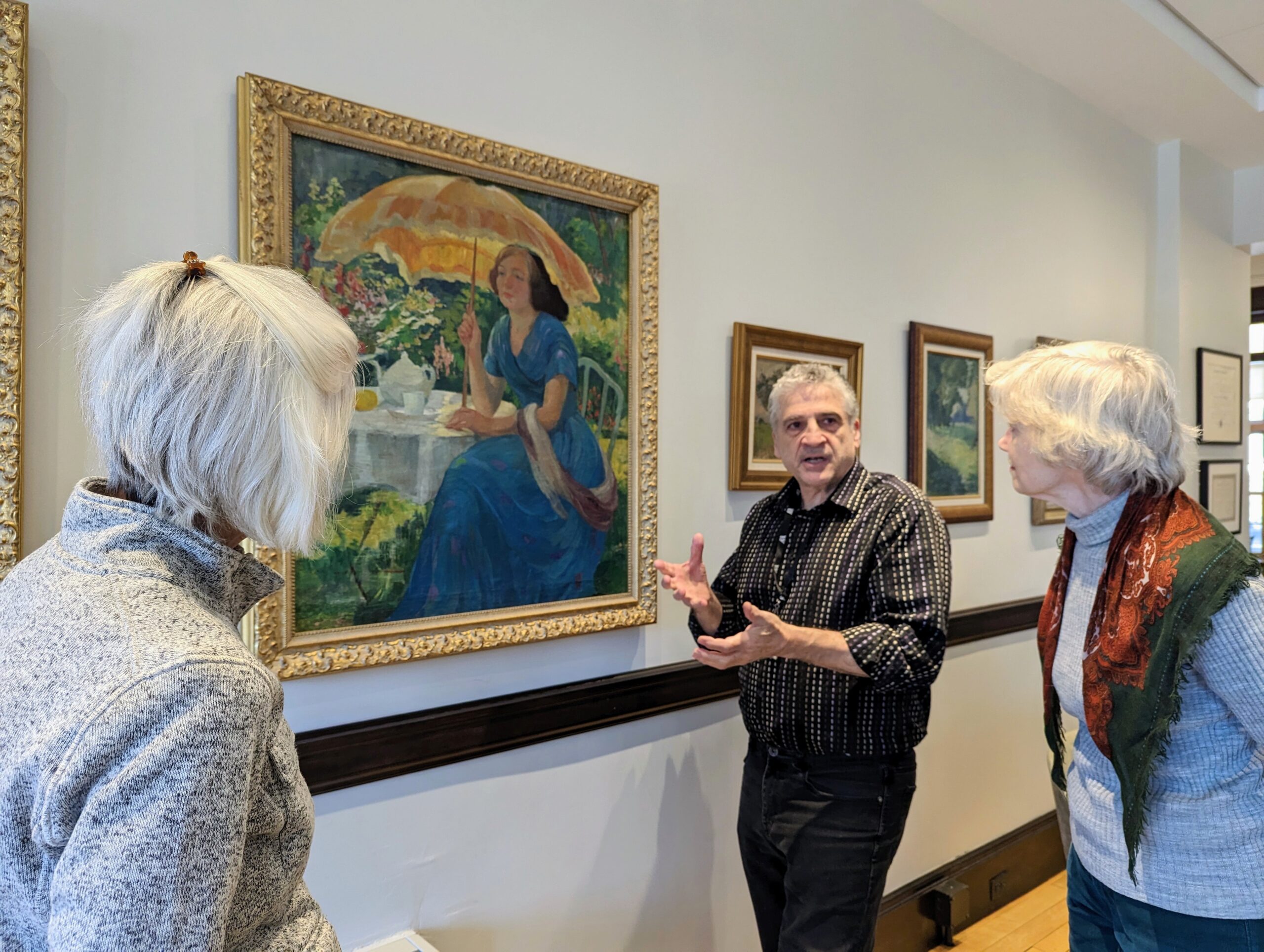
The initial gift began a long-term relationship between the Wheeler family and our school that included several more donations of paintings, as well as field trips to Mary’s birthplace of Concord, Massachusetts, where the Wheelers welcomed groups of students ranging from Lower to Upper School to learn about their family and local history. I recall watching Rick Wheeler lead a group of students across the North Bridge, one step at a time, to share a local custom of counting the number of wooden planks that spanned the river. The same steps had brought the Colonial militia to engage the British troops on the other side of the bridge in April of 1775.
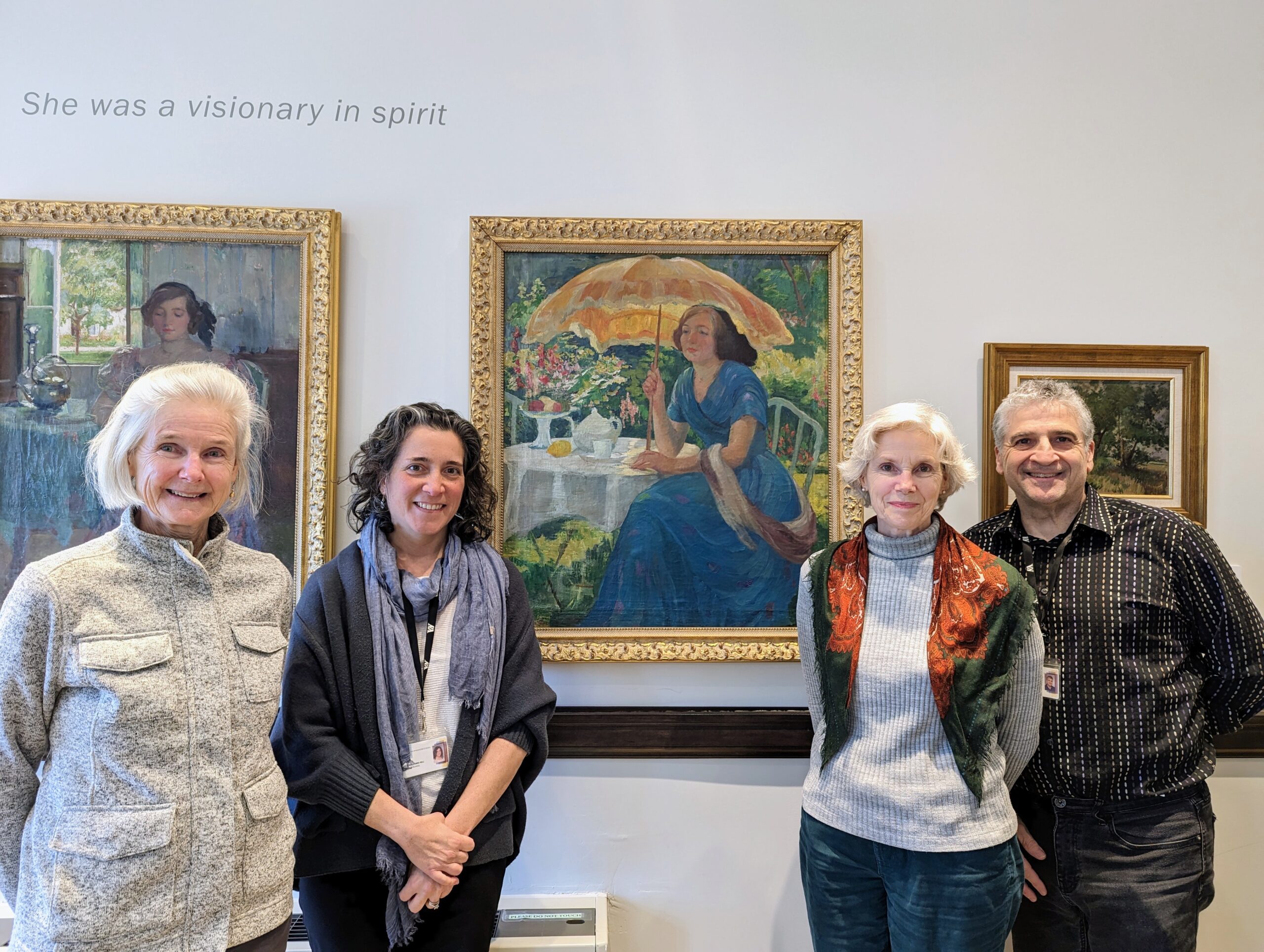
Rick and Betty Ann passed away several years ago, and we have been very fortunate to continue our relationship with the Wheeler family through three of their five children: Emily, Susan, and Sarah. During the process of settling their parents’ estate, I suggested the idea for them to donate a painting to a public museum in France. My research into the life and art of Mary Wheeler has brought me into contact with researchers and art historians who specialize in American Impressionism. While visiting Giverny, I met Katherine Bourguignon, a Terra Foundation for American Art curator, at her office located at the Hameau – the same house Miss Wheeler rented during her time there. Katherine introduced me to Cyrille Sciama, a curator at the Museum of Impressionism located very close to Hameau and Monet’s residence. After viewing a few examples of Mary Wheeler’s paintings, he welcomed the prospect of adding one of her paintings to the museum’s collection.
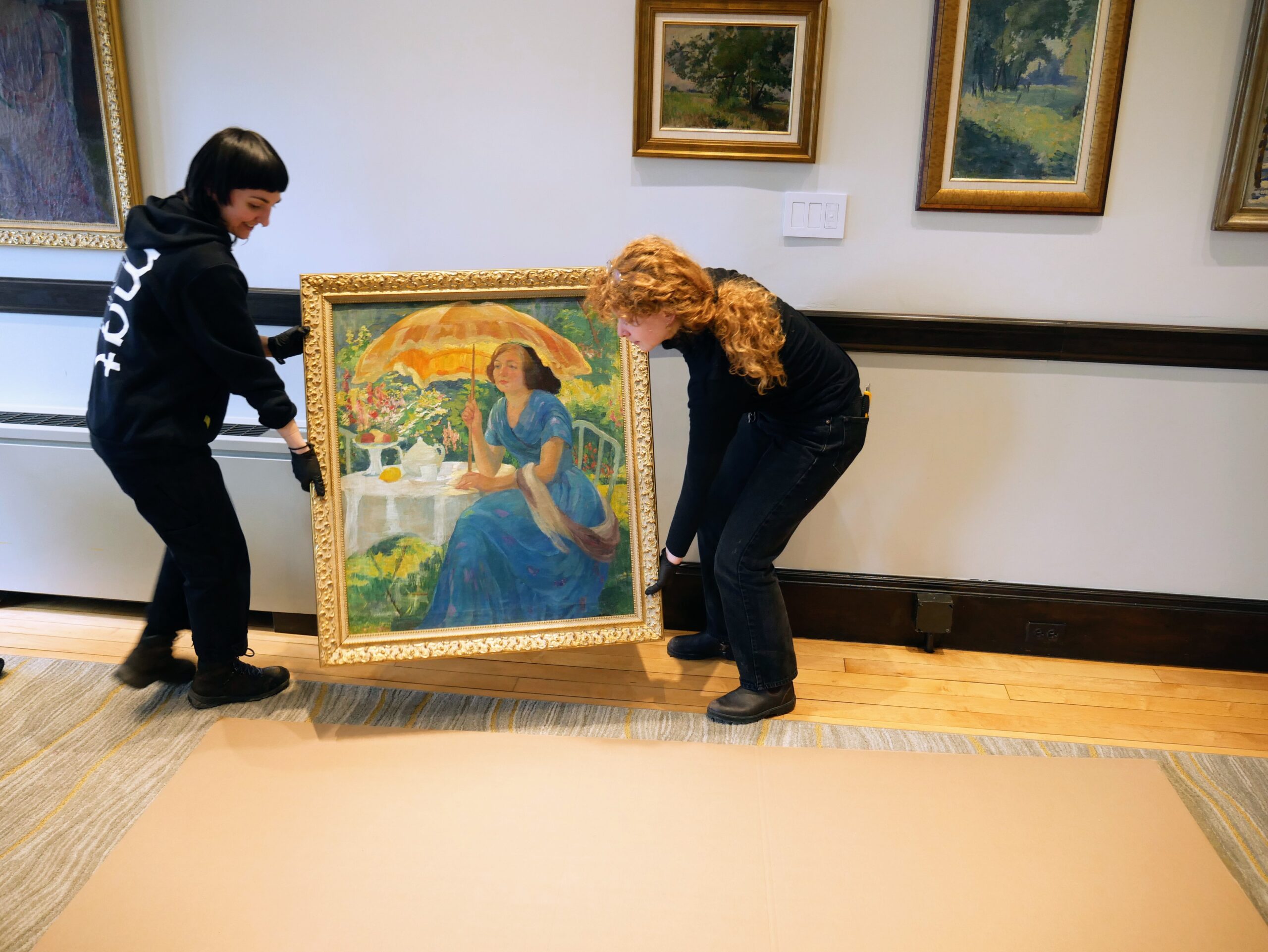
The next step then involved connecting the Wheeler family to the museum. After many emails and a Zoom call later, the terms for the donation were set. It is interesting to note the difference between gifting art to a public institution in France versus the United States, where there have been instances in which museums have sold artworks from their collections. By comparison, once an artwork enters a public institution in France, it cannot leave.
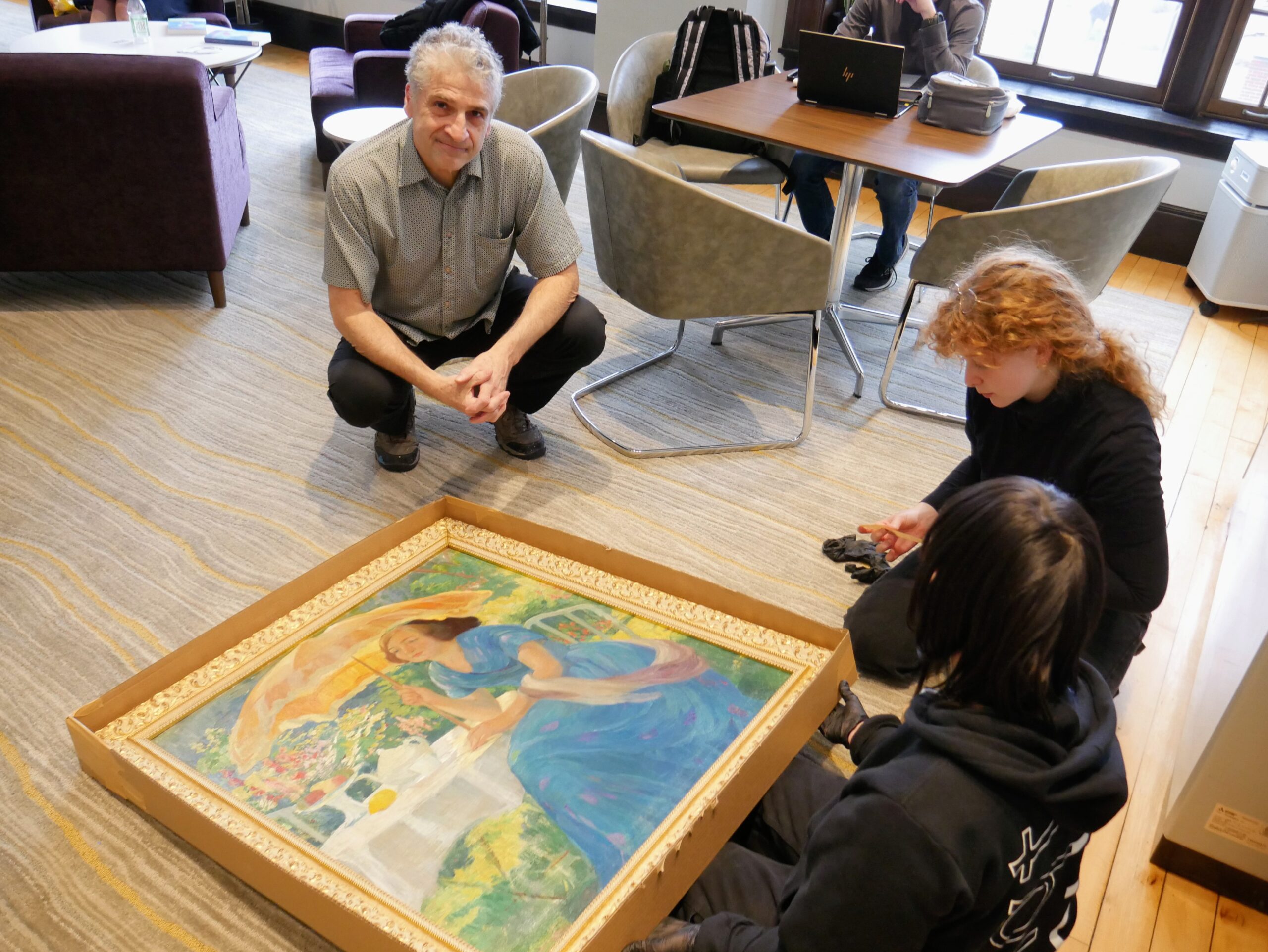
In early March, after the paperwork had been completed, “Tea in a Garden” (with the help of some meticulous packing and transportation) retraced the steps of our founder in a ritual she performed every summer between 1887 and 1912: a trip to New York City followed by a trek across the Atlantic Ocean to her beloved France, where she studied art privately during a time when women were denied access to art schools.
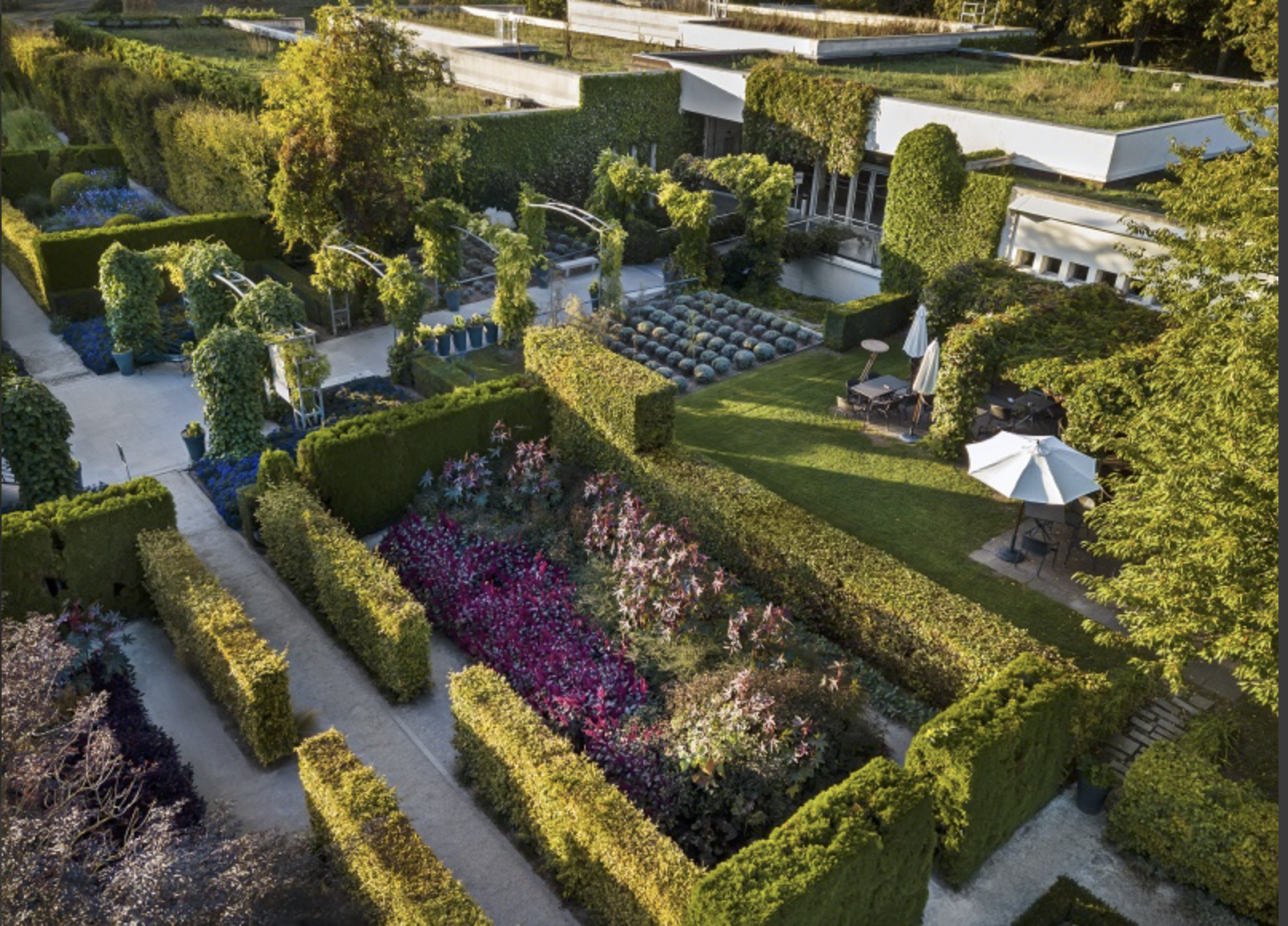
After stewarding the care and conservation of “Tea in a Garden” for many years, it wasn’t easy to let go of the painting. But as one of my primary goals in researching the life and legacy of Mary C. Wheeler has always been to share her story with a broader audience, knowing that 2,000 people toured the museum during the painting’s debut weekend offered confirmation that we made the right decision. Our founder loved France, and after establishing a fine art school for women, a revolutionary idea in 1883, she took extraordinary lengths to return to France, providing opportunities for her students to live and study in the culture she experienced in her youth. It took a world war to end her summer trips to Paris and Giverny, so it is immensely satisfying to see one of her paintings return to a place she treasured very much.
